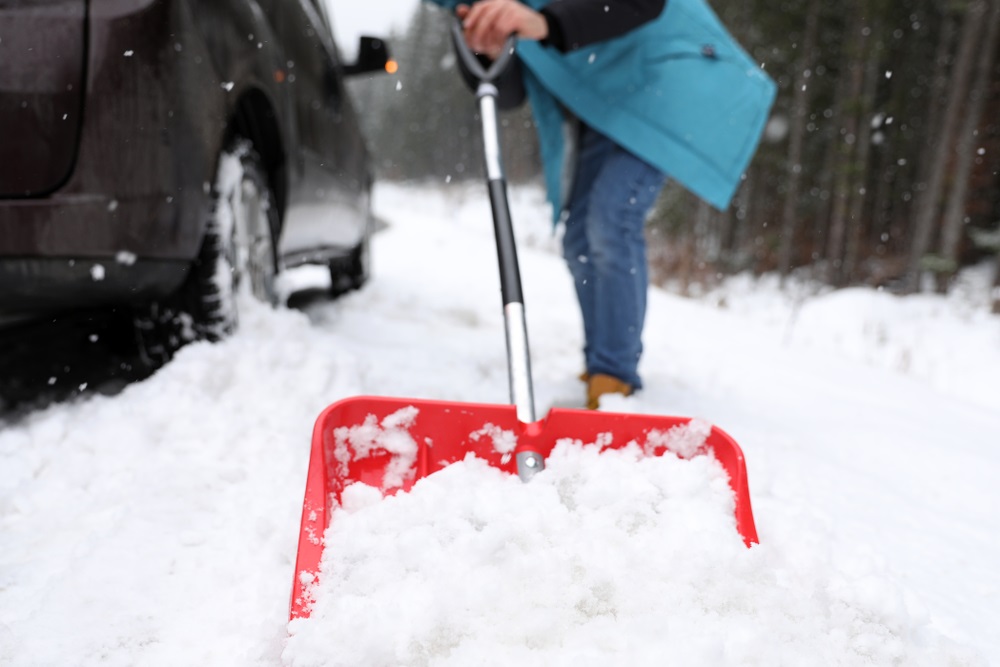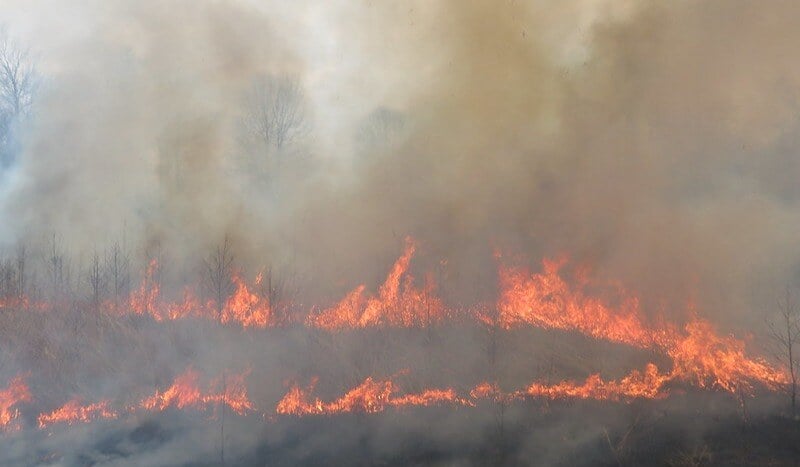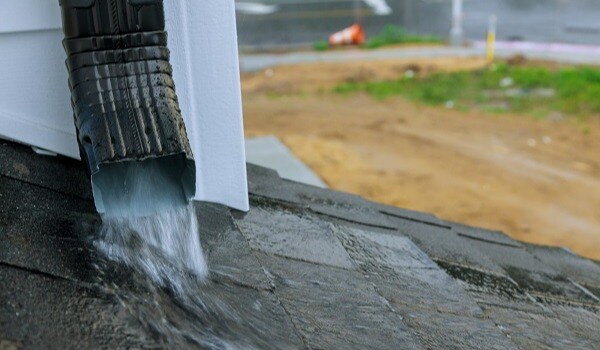
We pledge to provide straight talk from our NNINS Virginia insurance experts. Read the Northern Neck Insurance INTEGRITY PROMISE.
The weather in Virginia can be wildly unpredictable and severe. From thunder, hail, and windstorms to balmy 70-degree afternoons, weird weather appears to be the new normal. And there's one thing we can always count on in the commonwealth: rain! Heavy rains can bring significant troubles of their own for homeowners, not just from flooding.
 Justin, our home protection expert, says that gutters are the #1 most neglected and problematic issue in home claims next to home roof problems. Costly ones, too. We’ve had claims run upwards of $10,000- $12,000! It's important to know home insurance typically does not cover water damage due to neglected maintenance.
Justin, our home protection expert, says that gutters are the #1 most neglected and problematic issue in home claims next to home roof problems. Costly ones, too. We’ve had claims run upwards of $10,000- $12,000! It's important to know home insurance typically does not cover water damage due to neglected maintenance.
In this article, we will provide you with the necessary information about what homeowners insurance covers and tips on keeping your gutters in perfect shape for classic Virginia rain.
Does Home Insurance Cover Flood Damage or Water Damage From Gutters?
Home insurance does not cover flood damage but can cover water damage if it's the immediate result of a severe weather event. For example, home insurance can cover a repair from a storm if a tree falls on your house and rain subsequently causes immediate water damage. Regular maintenance of home gutters is a homeowner's responsibility. Home insurance does not cover water damage that results from routine maintenance neglect, even if it's identified after damage from severe weather.
Heavy rains have become a routine part of Virginia weather. While spring can bring significant rain, June is typically the rainiest month of the year in Virginia. Shoring up your gutters is the best thing you can do to prevent costly damage to your home. If you need to file a severe weather insurance claim and have questions, we're close by and ready to help.
How to prepare your home gutters for Virginia weather
To see if your gutters are ready to take on each season’s onslaught and avoid costly damage, answer these three simple questions.
1. Do your gutters have all the right parts?
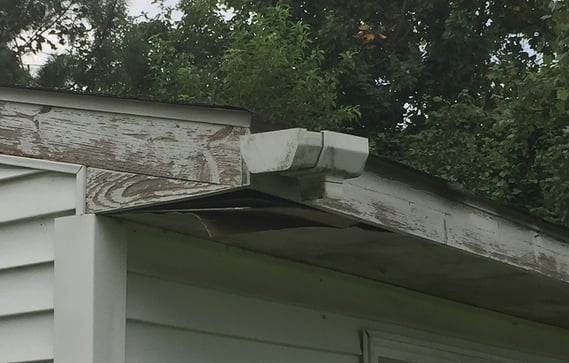
Rain gutters should run the entire length of the roof, ending with a downspout to release the water. Additionally, the gutter should be on the main roof on the top story of your house so it can catch rainwater at the tallest point to begin directing it to the downspout. Gutters should be level from front to back but slope forward an inch or two for every 40 feet (a quarter inch for every 10 feet).
Gutters that are not pitched correctly hold water and encourage vegetation, moss, or lichen growth. The remaining water can also cause gutters to sag over time, making them even more ineffective. If the gutter is clogged and begins to overflow, it can cause roof damage and erosion around the foundation of your house.
If your gutters have holes, leaks, or missing parts, a professional can quickly repair them and ensure they are correctly angled.
2. Are your gutters free of leaves, vegetation, and other debris?
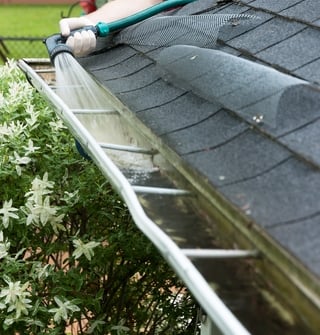
Winter’s cold wind blows fall leaves and debris, and spring brings spiraling seed pods. Gutter cloggers prevent your gutters from doing the mighty work of running all that Virginia rain away from your home's foundation. Fall and spring are good times to make sure your gutters are clean. Hire someone for the job or do it yourself when someone is home to spot you on the ladder. Homeowners can add all kinds of handy gutter guards to prevent debris from collecting in their gutters. Check them out!
This last question is critical, so if your answer is "no," get it remedied ASAP!
3. Do you have gutter extensions at the end of ALL downspouts? (Yes, they need to be clog-free as well!)
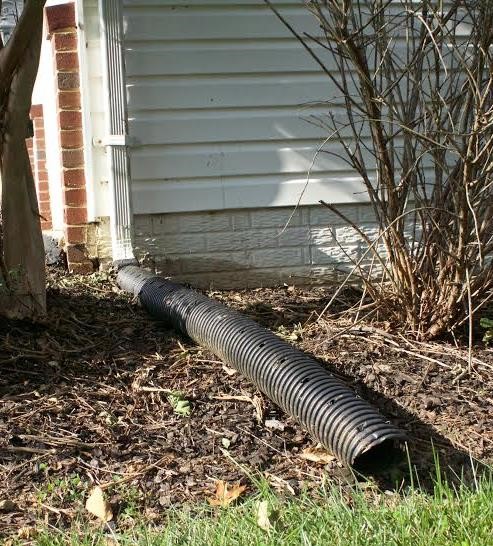
Downspout water pooling close to the foundation invites a wet basement and, ultimately, costly water damage and toxic mold inside your home. If your downspouts extend underground, it's a good idea to determine where that water is going, especially if you're not the home's first owner.
How far should those extensions go? It all depends on the yard slope. You want to be sure you’re directing the water as far as it takes to continue flowing away from your house.
A good way to check if the downspout is clogged is to remove it from the gutter drain and run water from your garden hose through it. If the water backs up, you have a clog.
Do you have homeowners insurance questions?
If you need to file a severe weather insurance claim and have questions, we're close by and ready to help. At Northern Neck, we offer unique coverage for various areas across Virginia. Find out what coverage plan is best for you!
THE NORTHERN NECK INSURANCE INTEGRITY PROMISE — We pledge to provide straight talk and good counsel from our NNINS Virginia insurance experts through our blog. While we hope you find this to be a helpful source of information, it does not replace the guidance of a licensed insurance professional, nor does it modify the terms of your Northern Neck Insurance policy in any way. All insurance products are governed by the terms in the applicable insurance policy.

